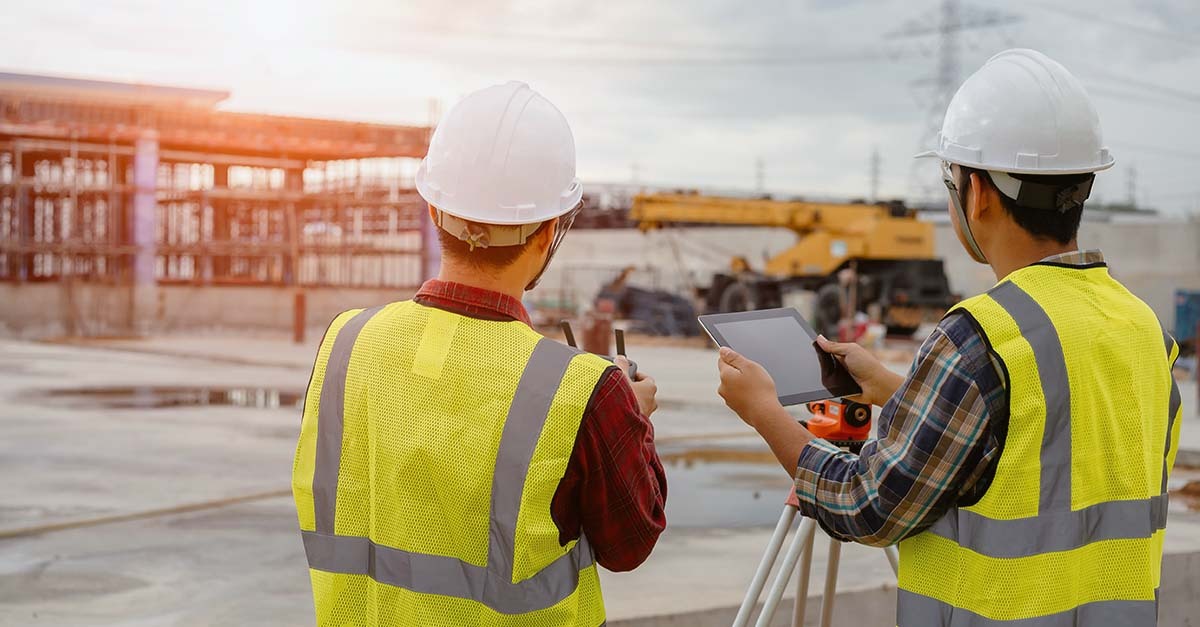
9 Key Benefits of Technology in the Construction Industry
As more technological advancements develop in the construction sector, it becomes challenging to keep up with all of them, not to mention the adoption process, which takes significant money and time. As an expert in the construction industry, you must learn about those technological advancements and thoroughly test them before using them.
Although adopting new technological advancements requires a considerable investment upfront, most can save money and time and increase business opportunities. Apart from this, embracing technology in your construction business will guarantee more benefits, like:
Improve Safety/Security
Technological advancements are already resulting in many changes in how different construction firms manage training and safety processes. The inception of augmented as well as virtual reality applications and devices plays a crucial role in this shift.
Some construction firms use virtual reality to expose new employees to risky environments that they are unfamiliar with. For instance, these devices enable new employees to experience what it feels like working at an extreme height and in a confined space in a controlled and safe environment.
In the field of view lens, visible-light and FLIR thermal cameras can give you total awareness of activities happening at the construction site after working hours. Combining identification and performance detection cameras with more advanced software creates sophisticated security that can help you protect your equipment and materials on the construction site.
Mitigate Uncertainties of Projects
When you can see how minor changes can impact the overall outcome of your project, you improve its management effort and fix issues faster.
Technological advancements allow construction teams to make specific hypothetical changes to a project and see their impact so you can make a cost-effective decision.
You may also detect potential mistakes that can affect your project. This, in turn, enables you to plan every construction activity much better and make necessary adjustments to the existing process.
Bring a Project to Life
Augmented and virtual realities are perfect examples of technological advancements that generate a buzz. In the case of virtual reality technology, it allows you to present potential clients with 3D models or 2D drawings.
You may create a very immersive virtual reality experience. This helps to improve your planning and design for construction projects you decide to handle. For instance, you may envision unique planning challenges for an amusement park or a zoo.
On the other hand, augmented reality is helpful around the construction site itself. Incorporating this technology into wearable tech helps your employees work smarter and avoid hazards. Not to mention, it allows them to carry out tasks, such as measuring.
Enhance Efficiency
Before, construction firms faced the challenges of sharing and creating design information. Designers, as well as other experts, had to draw sketches, illustrations, and project outlines manually. Then, they would send them to customers and relevant personnel for approval and review.
Through technology in the construction industry, project managers can now use software to share digital sketches, get feedback, and coordinate projects. This way, everyday operations, both small and large, significantly improve.
In addition, technology also enables users in the construction industry to coordinate information across different apartments and with clients. This, in turn, leads to more streamlined and less costly operational models, with minimized miscommunication and change orders.
Increase Productivity
Improving productivity is among the critical concerns for most contractors. The construction industry has been lagging for many years – something that posed challenges to finish projects successfully. Any delays may mean a breach of contracts, and you can even find yourself dealing with disputes about construction in court.
In addition, breaking deadlines may mean shelling out a lot of money for additional permits, equipment, and labor, significantly lowering your profit margin. By all means, you need to ensure you improve productivity and finish the project within budget and on time.
The best way to achieve that is to use technological tools to deal with small and large tasks. Waiting time will be one of the critical areas you may improve and even see good results.
Better Document Tracking and Workflow
Construction companies that thrive well in the competitive industry streamline processes, improve workflows, and minimize efficiencies. By embracing technological advancements, you integrate data as well as avoid data silos, bringing the visibility that you require.
Also, construction firms that automate and have integrated data can increase ROI and save time. Tech solutions will help you handle requirements documentation through alerts and email tracking. Whether you want help with notices, issues, or submittals, construction technological advancements can help you keep everyone on board.
Better Communication
A recent survey shows that miscommunication causes more than 45% of rework. Using a cloud-connected mobile app has become routine, and almost every field in the construction industry agrees with this.
This, in turn, ensures precise and accessible communication. Through equipment integration for reality capture and digital layout, connecting with people in the field becomes transparent and complete.
Facilitate Decision-Making Process
Intelligent modeling enables architects, contractors, and designers to change the design of a building. This technological advancement also provides information about all the possible effects on material costs and labor, not to mention time constraints.
Making changes as the project progresses and seeing potential results can improve your team’s capacity to make excellent and cost-effective decisions. In addition, this technological advancement enhances the chance of your construction projects staying within the budget and setting a timeframe.
Help with Proposals and Planning
When presenting to clients, you need to consider all the details. Apart from mathematically accurate and meticulously detailed drawings to back your project’s desired outcome and aims, you can use technological advancement to manage projects.
Technology like BIM (building information modeling) will enable you to create digital building representations, from physical functions and characteristics to material use.
In conclusion, technological advancements benefit the construction sector in various ways. From safety and construction processes to visualization and design, technology improves quality, accuracy, and efficiency in the industry, with drones, cameras, virtual reality, crane simulation, and augmented reality being perfect examples of technologies making that positive change.



